
Harry Lillis "Bing" Crosby Jr. was an American singer, actor, television producer, television and radio personality and businessman. The first multimedia star, he was one of the most popular and influential musical artists of the 20th century worldwide. He was a leader in record sales, network radio ratings, and motion picture grosses from 1926 to 1977. He was one of the first global cultural icons. He made over 70 feature films and recorded more than 1,600 songs.
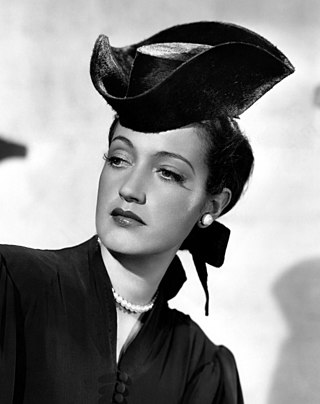
Dorothy Lamour was an American actress and singer. She is best remembered for having appeared in the Road to... movies, a series of successful comedies starring Bing Crosby and Bob Hope.

Rose Joan Blondell was an American actress who performed in film and television for 50 years.
The Hollywood Victory Committee was an organization founded on December 10, 1941, during World War II to provide a means for stage, screen, television and radio performers that were not in military service to contribute to the war effort through bond drives and improving morale for troops. It was associated with the Screen Actors Guild. The Committee organized events between January 1942 until August 1945. Chairmen of the committee included Clark Gable, James Cagney, Sam Levene and George Murphy. Hattie McDaniel was the Chairman of the Negro Division of the Hollywood Victory Committee, providing entertainment for soldiers in hospitals, and those stationed at military bases.
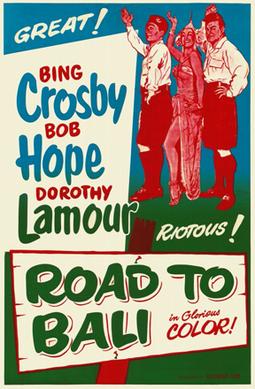
Road to Bali is a 1952 American comedy film directed by Hal Walker and starring Bing Crosby, Bob Hope, and Dorothy Lamour. Released by Paramount Pictures on November 19, 1952, the film is the sixth of the seven Road to … movies. It was the only entry in the series filmed in Technicolor and was the first to feature surprise cameo appearances from other well-known stars of the day.

Blue Skies is a 1946 American musical comedy film directed by Stuart Heisler and starring Bing Crosby, Fred Astaire, and Joan Caulfield. Based on a story by Irving Berlin, the film is about a dancer who loves a showgirl who loves a compulsive nightclub-opener who can't stay committed to anything in life for very long. Produced by Sol C. Siegel, Blue Skies was filmed in Technicolor and released by Paramount Pictures. The music, lyrics, and story were written by Irving Berlin, with most of the songs recycled from earlier works.
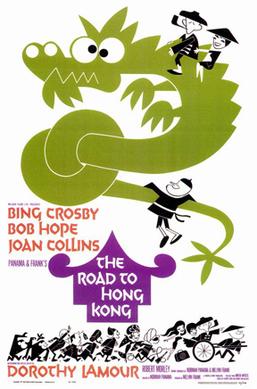
The Road to Hong Kong is a 1962 British semi-musical comedy film directed by Norman Panama and starring Bing Crosby and Bob Hope, as well as Joan Collins, with an extended cameo featuring Dorothy Lamour in the setting of Hong Kong under British Rule. This was the seventh and final installment in the Road to … series and the only one made without the involvement of Paramount Pictures, though references to the others in the series are made in the film and shown in Maurice Binder's opening title sequence.

John Elmer Carson, known as Jack Carson, was a Canadian-born American film actor. Carson often played the role of comedic friend in films of the 1940s and 1950s, including The Strawberry Blonde (1941) with James Cagney and Arsenic and Old Lace (1944) with Cary Grant. He appeared in such dramas as Mildred Pierce (1945), A Star is Born (1954), and Cat on a Hot Tin Roof (1958). He worked for RKO and MGM, but most of his notable work was for Warner Bros.
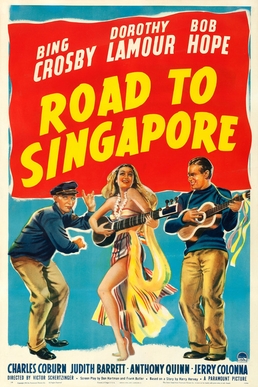
Road to Singapore is a 1940 American semi-musical comedy film directed by Victor Schertzinger and starring Bing Crosby, Dorothy Lamour and Bob Hope. Based on a story by Harry Hervey, the film is about two playboys trying to forget previous romances in British Singapore, where they meet a beautiful woman. Distributed by Paramount Pictures, the film marked the debut of the long-running and popular "Road to ..." series of pictures spotlighting the trio, seven in all. The supporting cast features Charles Coburn, Anthony Quinn, and Jerry Colonna.

Road to Zanzibar is a 1941 Paramount Pictures semi-musical comedy film starring Bing Crosby, Bob Hope, and Dorothy Lamour, and marked the second of seven pictures in the popular "Road to …" series made by the trio. It takes place in the Sultanate of Zanzibar.

Variety Girl is a 1947 American musical comedy film directed by George Marshall and starring Mary Hatcher, Olga San Juan, DeForest Kelley, Frank Ferguson, Glenn Tryon, Nella Walker, Torben Meyer, Jack Norton, and William Demarest. It was produced by Paramount Pictures. Numerous Paramount contract players and directors make cameos or perform songs, with particularly large amounts of screen time featuring Bing Crosby and Bob Hope. Among many others, the studio contract players include Gary Cooper, Alan Ladd, Paulette Goddard, Ray Milland, William Holden, Burt Lancaster, Robert Preston, Veronica Lake, William Bendix, Barbara Stanwyck and Paula Raymond.

Francis Curry McHugh was an American stage, radio, film and television actor.

Star Spangled Rhythm is a 1942 American all-star cast musical film made by Paramount Pictures during World War II as a morale booster. Many of the Hollywood studios produced such films during the war, generally musicals, frequently with flimsy storylines, and with the specific intent of entertaining the troops overseas and civilians back home and to encourage fundraising – as well as to show the studios' patriotism. This film was also the first released by Paramount to be shown for 8 weeks.

Command Performance was a radio program which originally aired between 1942 and 1949. The program was broadcast on the Armed Forces Radio Network (AFRS) and transmitted by shortwave to the troops overseas—with few exceptions, it was not broadcast over domestic U.S. radio stations.

This is a selection of films and television appearances by British-American comedian and actor Bob Hope (1903-2003). Hope, a former boxer, began his acting career in 1925 in various vaudeville acts and stage performances

The musical short can be traced back to the earliest days of sound films.

This is a filmography for the American singer and actor Bing Crosby.

Welcome Stranger is a 1947 film directed by Elliott Nugent and starring Bing Crosby, Barry Fitzgerald, and Joan Caulfield. It was filmed in Hollywood with location shots at Munz Lakes during March to May 1946. Elliott Nugent appeared in one scene as a doctor sent to examine Barry Fitzgerald and that scene was directed by Billy Wilder.
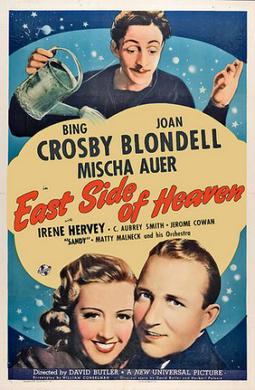
East Side of Heaven is a 1939 American musical film directed by David Butler and written by William M. Conselman and James V. Kern. The film stars Bing Crosby, Joan Blondell, Mischa Auer, Irene Hervey, C. Aubrey Smith, Robert Kent and Jerome Cowan. Filming took place in Hollywood from January 13 to March 7, 1939. The film was released on April 7, 1939, by Universal Pictures and had its New York premiere at Radio City Music Hall on May 4, 1939. This was another independent production in which Crosby had a financial interest.

The Bing Crosby Show for Chesterfield was a 30-minute musical variety old-time radio program starring entertainer Bing Crosby. The series ran on CBS Radio from 1949–1952.



















